Last week I had the honor and pleasure of co-chairing the Berrett-Koehler Authors Cooperative annual retreat, attended by over 70 people – ranging in age from 25 to 83, and enriched with authors from Slovenia, Singapore and Australia.
Each year I look forward to this retreat where I gather with fellow authors and community members to exchange ideas, connect around issues, and deepen friendships.
Although we focus on many different topics and approaches, we are joined by a shared commitment to the mission of Berrett-Koehler Publishers – to create a world that works for all.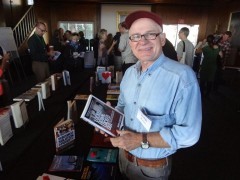
I had assumed I would be working instead of participating in this year’s retreat. Although I frequently design and facilitate these kinds of large-group, interactive meetings, there’s more pressure when you are doing it for your peers; and my responsibilities during the meeting, would keep me too busy.
However, I am delighted to report that the retreat was a huge success, and contrary to my expectations, I was able to relax and enjoy myself much of the time.
What was different? It’s a lesson I am continually deepening my understanding around.
The Paradox of Leadership: Let go of control but keep responsibility.
My ability to do this boils down to these two simple factors:
1. Have trust.
2. Don’t check out.
Trust.
I had trust and confidence in my co-chair, Jeannie Coyle, our planning team (Jake Jacobs, Mila Baker and Rob Jolles), and our administrator, Brenda Price. It makes a huge difference when you know you can count on your team.
I had trust and confidence in our design. It was solid, the details had been carefully thought through and we were well-prepared.
I had trust and faith in our community – that the community had the strength and wisdom to provide what was needed. Trusting your community is essential for allowing space for the wisdom of the community to arise.
Don’t check out.
However, trust alone is not enough. The other critical factor is to maintain awareness of the environment and how things are going. Keep your antennae out – allow the community to provide what’s needed, and then if something is missing, you step in quietly. (No one noticed we moved the tables to the wall at one point. All they noticed was that things went smoothly and we stayed on schedule.)
The key to the paradox is to both fully participate AND stay aware at the same time.
The Building Blocks.
My sense of trust and willingness to let go of control didn’t come out of thin air. It developed as a result of our planning process, based on these principles from Real-Time Strategic Change (RTSC):
1. Strong Planning Team. Choose a planning committee that is representative of the community, so they are tuned into the needs and desires of the entire community. Create opportunity for the team to be actively involved in the design process, and support team development so there is a shared sense of ownership for the success of the event.
2. Purpose Driven. The first task of the planning team is to identify a clear purpose and desired outcomes for the event. Then throughout the design process, keep the purpose in mind at all times. Every aspect, every event, every speech must support the purpose and if it doesn’t, don’t include it. Just because activities have occurred in the past, they should not be included automatically. If someone wants to speak during the event and it doesn’t further the purpose of the meeting, you’ll need to make a tough call and tell them they can’t speak. There will be times when the desires of an individual doesn’t match the needs of the group, and you’ll need to diplomatically say “no.” When it’s someone in a power position, the support of a strong team is most important.
3. Over-Prepared. Consider every detail and determine what support is needed to make it successful. Our design notes were over five pages long and included details for every agenda item: times, location, facilitation notes, and materials and AV support needed. Plus we had a set of equally long logistics notes.
4. Flexibility in the Moment. Be prepared to respond and adjust based on what is happening in the moment. Huddle frequently and make adjustments as needed. Not enough flipchart stands for one of the activities? No problem. A quick team huddle for creative problem-solving, and simply move some tables next to walls and tape posters there! None of the participants were ever aware there was a problem.

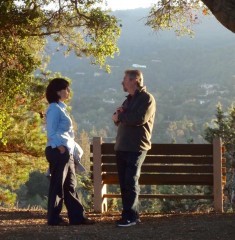
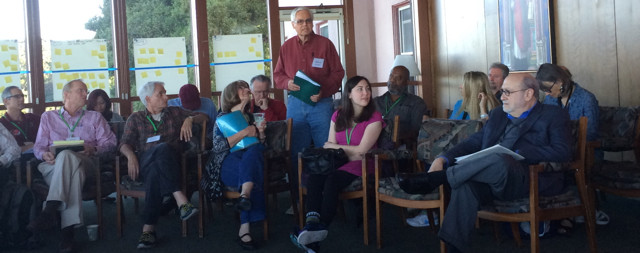
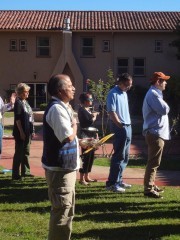
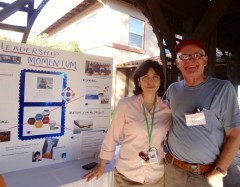
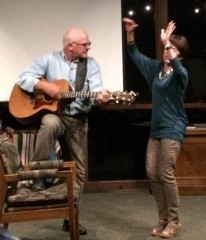












Great points – all of them. I’m glad you successfully navigated the course between working and participating. That’s a success right there.
I especially liked this point about purpose: Every aspect, every event, every speech must support the purpose and if it doesn’t, don’t include it.
It seems like discussions around purpose are treated as a singular statement that’s made, then forgotten. As you point out here, purpose has to be honored and acknowledged throughout; be it an event or an organization.
Thanks, Jane. You are so right that purpose must be the centerpiece – “be it event or an organization.” These same principles apply to organizations, teams and for us as individuals.
Great post, Jesse. It’s easy to say that a good manager lets go, trusts others, empowers the team. It’s harder to know how to balance those goals with one’s responsibility for a good outcome. Your advice about staying tuned in, being ready to help quietly with a small course correction helps to define the balancing act that makes it all work.
Thanks, Betsy. It is indeed an ongoing balancing act – letting go of control while staying tuned in, and decided when to act and when to let events take their course. It’s easy to tell leaders they need to trust and delegate. But even when you understand that intellectually, it’s not so easy to do, especially when you are deeply invested in the outcome. I think it helps to understand the conditions that need to be in place for those of us where it doesn’t come easily or naturally.
Great post Jesse! I think the real test of leadership is being able to live it not just write about it. Delegation is the biggest bugaboo I hear about. I will share your post with my clients to show that trusting your team can reap ultimate rewards. Wish I could have been there this year but heard you all hit it out of the park!
Great to hear from you, Jennifer. You were greatly missed! Thanks for your kind words. So glad this post resonated for you.
A leader with the qualities and skill that allows magnificent planning, staying in the moment, being flexible, and letting go is a marvelous leader indeed. It was lovely to read your well-written and well-expressed post.
Thank you, Fay. Living leadership is an ongoing journey, not a destination. I have discovered that the more I push the boundaries of my learning edge, the more I grow not only as a leader, but as a mother, a partner and a friend.
Hi Jesse
Control is an illusion created by building a process around the needs of the people involved in the process. When time is spent to actually determine what is needed by those involved it becomes easy to carry off any activity as though it was scripted exactly as it happened. I have been involved in planning events involving a few thousand people, getting them to go off without a hitch took selecting a team that could first define what the attendees wanted and needed, because they were in reality the same types of people. You also have to be sensitive to what is happening around you and adjust accordingly, after all stuff happens (Murphy’s law), but generally you can figure on a few problems occurring and plan for them whether they or something else happens really doesn’t cause an Un-surmountable problem if you expected something to go wrong. Control is having good people capable of dealing with any problem without panic occurring. If those running an event stay calm people will always see you as in control, after all the only thing we have true control over is how we react, we can never really control what others do. When leaders remain calm those around them will always have the perception of those leaders being in control.
I agree with most of your building blocks but the over-prepared one. In reality it isn’t being over-prepared, but in fact being prepared. The problem I see all to often is that most people are under prepared, they some how think that their plan will go off without a hitch, when reality is that things will always go wrong some where along the way. One of the key requirements in being prepared is accepting that problem will come up, and planning for how to deal with them when they do occur. When you have planned to deal with problems when one occurs whether you thought of it or not, you are ready for it and you remain calm, and deal with it quickly. I have never felt over prepared for anything, but it can be really easy to be under prepared you simply avoid thinking off and planning for those real life moments that happen.
Thanks so much for sharing your own experience, Robert. You raise many excellent points. I am reminded about the importance of leadership alignment. I remember planning a large group meeting with the officers of a utility company where decisions would be made in real time. At the last moment they started to get cold feet and talk about what a big risk it was. My colleague, Jake Jacobs told them, “You’re right. It’s a huge risk. But the risk isn’t out there. Your people will be fine. The risk is right here in this room. Are you going to be able pull together to make quick, smart decisions as a team?” You could have heard a pin drop in the room after he spoke because everyone realized he was right. They needed to address their own issues and be aligned as a team. Without leadership alignment, people in organizations are pulled in many different directions. But with it, then there is what you refer to as the perception of control.
Thanks also for your point about being prepared. Point well-taken. It’s only “over” in relation to “under.”
Enjoyed reading this and am glad you were able to enjoy the retreat!
I agree with the building blocks and letting go of control is the biggest issue I have found. Several of our clients have said leading change is a life lesson in letting go.
Once all the work is done in the planning and preparing and getting the folks in place, you have to let go and enjoy it and be present in the moment. Worrying at that time doesn’t get much done.
It is a life lesson. And one of the biggest lessons is learning how to stay present in the moment. Too many people put so much effort into the planning and then check out thinking it’s time to relax and enjoy themselves. Staying present to whatever is occurring AND enjoying yourself, well, that’s the life lesson.
I appreciate your thoughts, Emily. Great to hear you agree! (Wish you could have been there.)
Jesse, this is a great post, illuminating something we all deal with in our work, families, and community. When leaders can “let go” and still pay attention (for guidance and course corrections), they will generally find that things go well. If the mission/purpose is clear and people are treated with respect, they will do the right thing. And when this happens, I sometimes hear that they feel “lighter”, “relieved”….and who knows? They may even be able to enjoy themselves, as you experienced. Glad you had a great time!
Great points, Mary Jo. I agree that you can trust that people will do the right thing if the mission/purpose is clear and if they are treated with respect, although I would add two more “if’s” – if they believe it is worthwhile and if they have the opportunity for real involvement. Interesting point that leaders actually feel lighter when this happens. I recently read that the more “important” a leader is, the less they smile. I wonder if part of that is due to hanging tight to control and feeling the weight of responsibility.
Since I WAS at the retreat, I think I am uniquely qualified to say “AMEN” to your post. Having co-chaired the event last year, I know what it takes and I believe you just raised the bar.
I do believe in over-preparing because you can then allow for the unexpected to happen. It’s like giving your speech: you can’t improvise as needed if you don’t have a structure that actually allows you to return in comfort.
Lastly, you ended up trusting the process and with clear intentionality, allowed the energy to flow. Thanks to ALL of you.
Thank you, Eileen. Your praise means a lot. I appreciate your point that over-preparing creates a foundation that allows you to improvise. I so enjoy the picture of you singing and dancing with John Kador, just had to include it!
Jesse, I think this was a wonderful post because you used the description of an entire event to illustrate the fact that people need not always be in the forefront and be seen to be taking decisions on behalf of their team to be called leaders. At the risk of sounding cliched, the lose control to gain control phrase was exactly this, except that you said it much better in your post.
It took me a number of years to understand this point that we need to be driven by the outcomes defined by an event. This means that teams that manage an event or project can do so in any innovative way they like without being tied down by to one way by a leader. One of the best learnings for me was that my team members could have much better approaches to handling a situation than my one-track mind could think of :-).
Finally, the greatest joy for me was not to be seen standing in front and taking all the decisions. Rather, it was to stay in the background, let the team members handle things and only quietly step-in on a one to one basis to help when necessary. This way, they learnt the ropes, were seen to be successful and I became redundant enough to move on.
Thank you, Sudhir. Your description of how supporting others success supported your own success reminds me that when we are driven by the desire to make a difference, rather to get our own needs met, in the end we actually do both.
I think culture issue also comes here. Where a leader is worshiped and he/she wants the world to know that he/she is to be seen as in control, barks commands and drives everybody crazy to show that the leader is the person to respected, honoured and to be showered with praise. The team members are to be seen and not to be heard. The leader behaves as if without him/her, nothing will work.
Sadly this kind of leadership is a complete misuse of power, where many people suffer and the organization is not able to sustain success over the long-term.